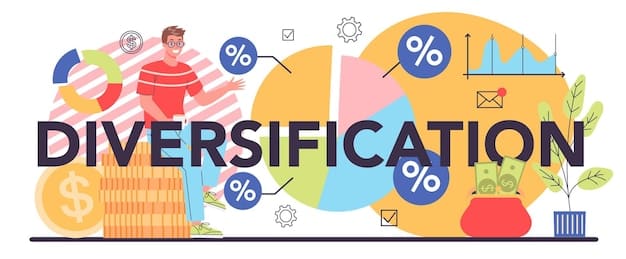
Have you ever wondered how some investors always seem to pick the right stocks at the right time? The secret might be something called industry analysis, a method which involves evaluating the economic, competitive, and regulatory factors that affect a particular industry’s performance.
Industry analysis is the process of evaluating the economic, competitive, and regulatory factors that affect an industry’s performance. It involves analyzing the industry’s size, growth, and profitability to identify the key drivers of success and potential risks. By understanding these factors, investors can make better decisions about which stocks to invest in and when to buy or sell them.
Key Components of Industry Analysis
Here are some key components that you must scrutinize as part of industry analysis:
Various research methods, including qualitative and quantitative approaches, are employed to gather and analyze data for industry analysis.
1. Market Size and Growth Rate
Understanding the market size and its growth trajectory is foundational in industry analysis, often measured using quantitative methods. Let us see how these factors play a crucial role:
- Current Market Size: This quantifies the total sales or revenue generated by all players within the industry. It serves as a benchmark for assessing the scale and significance of the industry in the broader economy.
- Growth Rate: This is an indicator of how fast the industry is expanding. A high growth rate typically attracts investments due to the potential for high returns. However, it might also signal competition and possibly a saturated market if growth is driven by an influx of new entrants.
Investors need to balance the attractiveness of rapid growth against the risks of increased competition and market volatility.

2. Industry Trends and Drivers
Keeping a pulse on emerging trends is crucial in industry analysis. Emerging trends can significantly influence marketing strategies, helping businesses position themselves effectively in the market. These trends can drive growth and present new opportunities or risks:
- Technological Advancements: Innovations can disrupt or propel industries by creating new business models or improving efficiency. For example, the rise of fintech has revolutionized the banking industry.
- Regulatory Changes: Changes in regulations can open up new markets or impose constraints that can stifle existing ones. The impact of GDPR on the data management policies of companies across Europe is a prime example.
- Consumer Behavior Shifts: Shifts in consumer preferences can lead to rapid changes in industry fortunes. The increasing demand for sustainable and ethical products is reshaping numerous industries, including fashion and consumer goods.
3. Financial Health and Profitability
Financial metrics provide a significant amount of information about an organization or industry’s health and its potential for sustainability and growth:
- Profit Margins: High-profit margins might indicate a less competitive or more efficiently managed industry, whereas low margins could signal price wars or high operating costs.
- Debt Levels: Industries with high debt levels may face difficulties during economic downturns due to the burden of interest payments.
- Return on Equity (ROE): A high ROE suggests that companies in the industry are generating significant income from their equity investments, which could attract more investors.
4. Regulatory Environment
The impact of governmental policies can significantly alter an industry’s business trajectory. Industry associations and professional organizations often provide guidance on navigating regulatory changes:
- Compliance Costs: Industries such as pharmaceuticals and financial services face high compliance costs, which can affect their profitability.
- Subsidies and Tariffs: These can protect or promote certain industries. For example, subsidies for renewable energy projects have spurred growth in the green energy sector.
5. Competitive Rivalry
Understanding the level of competitive rivalry in a systematic way helps in predicting future industry stability and profitability:
- Market Entry Barriers: High barriers protect existing companies but might discourage innovation.
- Market Saturation: In a saturated market, fierce rivalry can lead to price confrontation, reducing overall profitability.
- Differentiation: In industries where products and services are highly differentiated, companies can often command premium prices and achieve higher margins.
How to Conduct Industry Analysis and Data Collection
To conduct industry analysis, you can use a variety of tools and resources to collect data. Effective data collection methods are crucial for gathering accurate and relevant information. Electronic resources such as databases and e-books can provide valuable information for industry analysis. These include:
Industry Reports: Industry reports provide detailed information about the size, growth, profitability, and competitive landscape of an industry. These reports can be found through industry associations, market research firms, and financial news websites.
Competitor Analysis: Analyzing the competition within an industry can provide valuable insights into the importance of industry’s dynamics. This involves analyzing the strengths and weaknesses of the key players in the industry and how they compare to each other.
Financial Analysis: Analyzing the financial statements of companies within an industry can provide information about the industry’s profitability and growth potential. This involves analyzing the company’s revenue, net income, earnings per share, and other financial metrics.

Examples of Industry Analysis
Let us look at a few examples of industry analysis to see how it works in practice.
Each industry may require a particular way of analysis based on its unique characteristics.
1. The Electric Vehicle Industry
The electric vehicle (EV) industry is a rapidly growing sector that is attracting a lot of attention from investors. According to a report from ResearchAndMarkets.com, the global electric vehicle is expected to expand with more than 20% CAGR from 2022-2027. The primary purposes of analyzing the EV industry include understanding market dynamics and identifying growth opportunities.
To conduct an industry analysis on the EV industry, you might start by researching the key players, such as Tesla, NIO, and Rivian. You would then analyze their strengths and weaknesses, as well as their market share and growth prospects. Next, you would consider the macro environment. This might include factors such as government regulations, consumer preferences, and technological advancements.
For example, if there is a new battery technology developed that significantly improves the range of EVs, this could be a game-changer for the industry.
Finally, you would look for opportunities within the industry. This might include new markets to explore, such as emerging economies, or new customer segments, such as commercial fleets.
2. The Cybersecurity Industry
The cybersecurity industry is another sector that is getting a lot of attention from investors. The cybersecurity industry collects data on cyber threats and vulnerabilities to develop effective security measures. According to findings in a report from MarketsandMarkets, the global cybersecurity market size is anticipated to grow from $190.4 billion in 2023 to $298.5 billion by 2028 at a CAGR of 9.4%.
To conduct an industry analysis on the cybersecurity industry, you might start by researching the key players, such as Palo Alto Networks, CrowdStrike, and CyberArk. You would then analyze their strengths and weaknesses, as well as factors like government regulations, cyber threats, and technological developments.
Finally, you must look for opportunities within the industry. This search might include new products or services, such as cloud security or AI-powered threat detection.
Challenges of Sector and Industry Analysis for Small Businesses
While industry analysis is undoubtedly beneficial, it comes with challenges. The sheer volume of variables that can affect an industry—such as international trade issues, policy changes, or technological disruptions—makes it a complex task.
Furthermore, industries are not static; they evolve, and keeping our knowledge on up with continuous change requires constant research and adaptation.
Moreover, global interconnectedness means that events happening in one part of the world can affect industries on a worldwide scale, complicating the research and analysis process. Small businesses and enterprises often face additional challenges due to limited resources and access to data.
Conclusion
Embracing sector and industry analysis is pivotal for any investor aiming to make smart decisions in the stock market. This approach not only helps in identifying potential investment opportunities but also plays a crucial role in the broader strategy of portfolio management.










